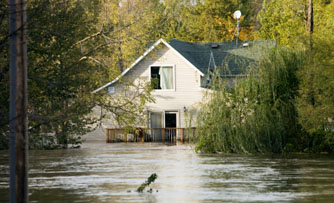Tax Relief for Disaster Victims and Those Who Help Them

Winter blizzards, spring tornadoes, summer hurricanes, fall wildfires—disasters can occur at any time, and despite precautions, you may suffer a financial disaster because of Mother Nature. Tax relief may be of some help to disaster victims. And there are tax breaks for helping disaster victims.
Amending returns
Nothing can restore lost and damaged photos and other family memorabilia of intrinsic value. But if you suffer a serious financial loss as a result of a federally declared disaster in 2014, don’t wait until you file your return in 2015 to deduct losses in excess of any insurance recovery. Instead, you can choose to report the 2014 loss on a 2013 return.
- If you haven’t yet filed your 2013 return, simply figure the loss on Form 4584 and enter it on Schedule A of Form 1040. Only amounts in excess of 10% of adjusted gross income are deductible.
- If you already filed your 2013 return, you’ll have to file an amended return, Form 1040X. The amended return cannot be filed electronically, even if you filed your original return in this manner.
Changing your address
A disaster may prevent you from living in your home, either permanently or at least for a long time. If you relocate, don’t forget to inform the IRS of your new address. Use Form 8822 for this purpose.
Donate to disaster relief
If you want to help disaster victims, you can make a tax-deductible donation to a relief organization, such as the American Red Cross. You must itemize in order to benefit taxwise from your donation. But use caution when giving to unknown organizations; unfortunately, some bogus ones spring up in the wake of disasters. Check on the organization’s tax-exempt status with the IRS at www.irs.gov/Charities-&-Non-Profits/Exempt-Organizations-Select-Check. You may also want to check Charity Navigator (www.charitynavigator.org), which rates charitable organizations.
Caution: If you give money, clothing, or other items directly to injured individuals, you can’t deduct this generosity.
If you want to lend a hand in disasters, you may deduct your out-of-pocket costs, such as driving your vehicle to and from the disaster area at the rate of 14 cents per mile. The work must be on behalf of an organization and not simply your personal efforts.
Conclusion
You can find of list of disasters qualifying for IRS relief at www.irs.gov/uac/Tax-Relief-in-Disaster-Situations. Also check out the IRS’s Disaster Relief Guide for Individuals and Businesses at www.irs.gov/pub/irs-pdf/p2194.pdf.
Source: http://www.irs.gov/uac/Tax-Relief-in-Disaster-Situations



